

Technology
Training AI models might not need enormous data centres – Crypto News
Once, the world’s richest men competed over yachts, jets and private islands. Now, the size-measuring contest of choice is clusters. Just 18 months ago, OpenAI trained GPT-4, its then state-of-the-art large language model (LLM), on a network of around 25,000 then state-of-the-art graphics processing units (GPUs) made by Nvidia. Now Elon Musk and Mark Zuckerberg, bosses of X and Meta respectively, are waving their chips in the air: Mr Musk says he has 100,000 GPUs in one data centre and plans to buy 200,000. Mr Zuckerberg says he’ll get 350,000.
This contest to build ever-bigger computing clusters for ever-more-powerful artificial-intelligence (AI) models cannot continue indefinitely. Each extra chip adds not only processing power but also to the organisational burden of keeping the whole cluster synchronised. The more chips there are, the more time the data centre’s chips will spend shuttling data around rather than doing useful work. Simply increasing the number of GPUs will provide diminishing returns.
Computer scientists are therefore looking for cleverer, less resource-intensive ways to train future AI models. The solution could lie with ditching the enormous bespoke computing clusters (and their associated upfront costs) altogether and, instead, distributing the task of training between many smaller data centres. This, say some experts, could be the first step towards an even more ambitious goal—training AI models without the need for any dedicated hardware at all.
Training a modern AI system involves ingesting data—sentences, say, or the structure of a protein—that has had some sections hidden. The model makes a guess at what the hidden sections might contain. If it makes the wrong guess, the model is tweaked by a mathematical process called backpropagation so that, the next time it tries the same prediction, it will be infinitesimally closer to the correct answer.
I knew you were trouble
The problems come when you want to be able to work “in parallel”—to have two, or 200,000, GPUs working on backpropagation at the same time. After each step, the chips share data about the changes they have made. If they didn’t, you wouldn’t have a single training run, you’d have 200,000 chips training 200,000 models on their own. That data-sharing process starts with “checkpointing”, in which a snapshot of the training so far is created. This can get complicated fast. There is only one link between two chips, but 190 between 20 chips and almost 20bn for 200,000 chips. The time it takes to checkpoint and share data grows commensurately. For big training runs, around half the time can often be spent on these non-training steps.
All that wasted time gave Arthur Douillard, an engineer at Google DeepMind, an idea. Why not just do fewer checkpoints? In late 2023, he and his colleagues published a method for “Distributed Low-Communication Training of Language Models”, or DiLoCo. Rather than training on 100,000 GPUs, all of which speak to each other at every step, DiLoCo describes how to distribute training across different “islands”, each still a sizeable data centre. Within the islands, checkpointing continues as normal, but across them, the communication burden drops 500-fold.
There are trade-offs. Models trained this way seem to struggle to hit the same peak performance as those trained in monolithic data centres. But interestingly, that impact seems to exist only when the models are rated on the same tasks they are trained on: predicting the missing data.
When they are turned to predictions that they’ve never been asked to make before, they seem to generalise better. Ask them to answer a reasoning question in a form not in the training data, and pound for pound they may outclass the traditionally trained models. That could be an artefact of each island of compute being slightly freer to spiral off in its own direction between checkpointing runs, when they get hauled back on task. Like a cohort of studious undergraduates forming their own research groups rather than being lectured to en masse, the end result is therefore slightly less focused on the task at hand, but with a much wider experience.
Vincent Weisser, founder of Prime Intellect, an open-source AI lab, has taken DiLoCo and run with it. In November 2024 his team completed training on Intellect-1, a 10bn-parameter LLM comparable to Meta’s centrally trained Llama 2, which was state-of-the-art when released in 2023.
Mr Weisser’s team built OpenDiLoCo, a lightly modified version of Mr Douillard’s original, and set it to work training a new model using 30 GPU clusters in eight cities across three continents. In his trials, the GPUs ended up actively working for 83% of the time—that’s compared with 100% in the baseline scenario, in which all the GPUs were in the same building. When training was limited to data centres in America, they were actively working for 96% of the time. Instead of checkpointing every training step, Mr Weisser’s approach checkpoints only every 500 steps. And instead of sharing all the information about every change, it “quantises” the changes, dropping the least significant three-quarters of the data.
For the most advanced labs, with monolithic data centres already built, there is no pressing reason to make the switch to distributed training yet. But, given time, Mr Douillard thinks that his approach will become the norm. The advantages are clear, and the downsides—at least, those illustrated by the small training runs that have been completed so far—seem to be fairly limited.
For an open-source lab like Prime Intellect, the distributed approach has other benefits. Data centres big enough to train a 10bn-parameter model are few and far between. That scarcity drives up prices to access their compute—if it is even available on the open market at all, rather than hoarded by the companies that have built them. Smaller clusters are readily available, however. Each of the 30 clusters Prime Intellect used was a rack of just eight GPUs, with up to 14 of the clusters online at any given time. This resource is a thousand times smaller than data centres used by frontier labs, but neither Mr Weisser nor Mr Douillard see any reason why their approach would not scale.
For Mr Weisser, the motivation for distributing training is also to distribute power—and not just in the electrical sense. “It’s extremely important that it’s not in the hands of one nation, one corporation,” he says. The approach is hardly a free-for-all, though—one of the eight-GPU clusters he used in his training run costs $600,000; the total network deployed by Prime Intellect would cost $18m to buy. But his work is a sign, at least, that training capable AI models does not have to cost billions of dollars.
And what if the costs could drop further still? The dream for developers pursuing truly decentralised AI is to drop the need for purpose-built training chips entirely. Measured in teraflops, a count of how many operations a chip can do in a second, one of Nvidia’s most capable chips is roughly as powerful as 300 or so top-end iPhones. But there are a lot more iPhones in the world than GPUs. What if they (and other consumer computers) could all be put to work, churning through training runs while their owners sleep?
The trade-offs would be enormous. The ease of working with high-performance chips is that, even when distributed around the world, they are at least the same model operating at the same speed. That would be lost. Worse, not only would the training progress need to be aggregated and redistributed at each checkpoint step, so would the training data itself, since typical consumer hardware is unable to store the terabytes of data that goes into a cutting-edge LLM. New computing breakthroughs would be required, says Nic Lane of Flower, one of the labs trying to make that approach a reality.
The gains, though, could add up, with the approach leading to better models, reckons Mr Lane. In the same way that distributed training makes models better at generalising, models trained on “sharded” datasets, where only portions of the training data are given to each GPU, could perform better when confronted with unexpected input in the real world. All that would leave the billionaires needing something else to compete over.
© 2025, The Economist Newspaper Limited. All rights reserved. From The Economist, published under licence. The original content can be found on www.economist.com
Catch all the Technology News and Updates on Live Mint. Download The Mint News App to get Daily Market Updates & Live Business News.
MoreLess
-

 Technology7 days ago
Technology7 days agoMulticloud Agility Comes to Financial Services – Crypto News
-
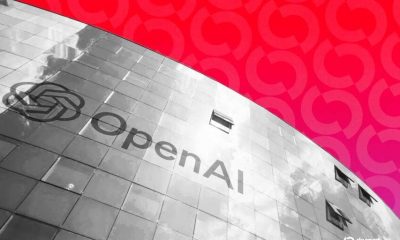
 Cryptocurrency1 week ago
Cryptocurrency1 week agoOpenAI Confirms Data Breach—Here’s Who Is Impacted – Crypto News
-

 Cryptocurrency1 week ago
Cryptocurrency1 week agoNew chains, old problems – Blockworks – Crypto News
-

 Blockchain1 week ago
Blockchain1 week agoEther Eyeing $3.2K As Stablecoin Yields Remain Low: Santiment – Crypto News
-

 Technology7 days ago
Technology7 days agoVivo X300, X300 Pro launched in India, price starts at ₹75,999: Display, camera details and all you need to know – Crypto News
-
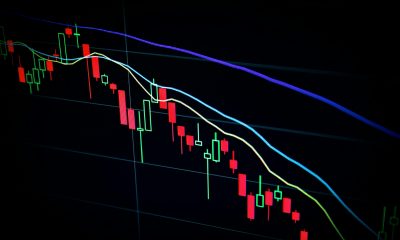
 Blockchain1 week ago
Blockchain1 week agoWhat’s Going On Behind The Scenes With XRP? Expert Answers – Crypto News
-

 Blockchain1 week ago
Blockchain1 week agoBitcoin Must Break Key Supply Clusters To Regain ATH Momentum – Watch These Levels – Crypto News
-

 Blockchain1 week ago
Blockchain1 week agoUpbit $30 Million Hack Update: Authorities Link Breach To North Korean Hackers – Crypto News
-
others1 week ago
Why Crypto Market Down Today? (29 Nov) – Crypto News
-
others1 week ago
Solana Price Outlook as CoinShares Withdraws SEC Filing for Staked Solana ETF – Crypto News
-

 Cryptocurrency1 week ago
Cryptocurrency1 week agoCrypto market mixed as Bitcoin tests $93K, Ethereum and XRP hit major resistance – Crypto News
-

 Blockchain1 week ago
Blockchain1 week agoEther Eyeing $3.2K As Stablecoin Yields Remain Low: Santiment – Crypto News
-
Business1 week ago
Crypto Exchange Bitget Donates $1.54M To Hong Kong Fire Victims – Crypto News
-
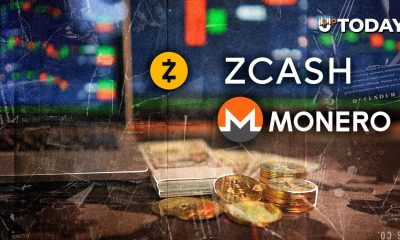
 Cryptocurrency1 week ago
Cryptocurrency1 week agoZcash, Monero in Tight Ranking Race: Who Wins? – Crypto News
-

 Cryptocurrency1 week ago
Cryptocurrency1 week agoXRP price prediction: ETF inflows, CME futures, and technical pressure align – Crypto News
-

 Cryptocurrency1 week ago
Cryptocurrency1 week agoWhy CoinShares Just Quit the $600M XRP and SOL ETF Battle – Crypto News
-

 others1 week ago
others1 week agoWTI Crude Oil gains as Russia-Ukraine talks, OPEC+ meeting eyed – Crypto News
-

 others1 week ago
others1 week agoGBP/USD edges lower to 1.3220 – Crypto News
-

 Metaverse1 week ago
Metaverse1 week agoIs Big Tech’s superintelligence narrative inflating the AI bubble? – Crypto News
-
Technology1 week ago
Jerome Powell Speech Today: What To Expect as Fed Ends QT – Crypto News
-

 Metaverse1 week ago
Metaverse1 week agoAI’s positive impact in focus at Mint All About AI Tech4Good Summit 2025 – Crypto News
-
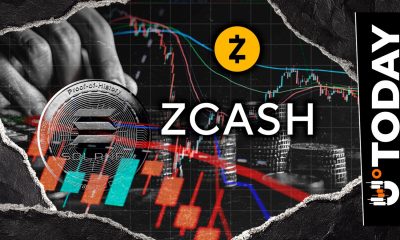
 Cryptocurrency1 week ago
Cryptocurrency1 week ago‘ZEC Is 20x Lower Than XRP’: Solana Builder Breaks Silence After Zcash’s 50% Crash – Crypto News
-
Business1 week ago
Coinbase Submits Recommendations to CFTC on Crypto Market Rules – Crypto News
-

 Blockchain1 week ago
Blockchain1 week agoBitcoin Forms Short-Term Bottom, $100,000 Rally in Sight – Crypto News
-
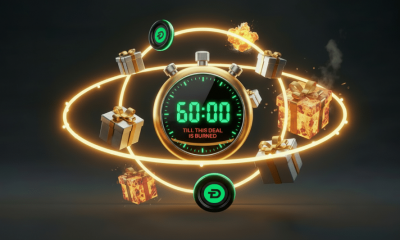
 Cryptocurrency1 week ago
Cryptocurrency1 week agoRemittix vs. Digitap ($TAP): Get in the action for $1 million in Black Friday bonuses – Crypto News
-
Business1 week ago
Michael Saylor Hints Fresh Bitcoin Buy With “Green Dots” Tease – Crypto News
-

 Cryptocurrency1 week ago
Cryptocurrency1 week agoBitcoin, Ethereum, and XRP Crash Triggering $637M in Liquidations – Crypto News
-
others1 week ago
Ethereum Price Crashes Below $3,000 as $500M Longs Liquidated: What’s Next? – Crypto News
-

 others1 week ago
others1 week agoXAG/USD hits record $56 as bulls dominate – Crypto News
-
Business1 week ago
China Begins Policy Talks to Crack Down on Stablecoin and Crypto Payments – Crypto News
-

 Blockchain1 week ago
Blockchain1 week agoSUI Climbs Into High-Risk Territory As Wave 4 Nears Its Exhaustion Point – Crypto News
-
Business1 week ago
Robert Kiyosaki Recommends Bitcoin and Ethereum as Hedge Against Potential Global Crisis – Crypto News
-
Business1 week ago
Hyperliquid Team Moves $90M HYPE as Network Becomes Top Fee Chain – Crypto News
-

 Technology1 week ago
Technology1 week agoIs your iPhone obsolete? Apple adds 5 new devices to the ‘no repair’ list – Crypto News
-
others1 week ago
21Shares XRP ETF To Begin Trading on Monday as Institutional Inflows Hit $666 Million – Crypto News
-
Business1 week ago
Arthur Hayes Predicts Bitcoin Rally To $500K By Next Year Over Fed Easing – Crypto News
-
Cryptocurrency1 week ago
Peter Schiff Predicts Bitcoin Decline Will Extend Into December as BTC Closes Out Red November – Crypto News
-
Technology1 week ago
Ethereum Price Prediction 2025: How High Can ETH Go by Year-End? – Crypto News
-
others1 week ago
BNB Chain Taps Arbitrum Veteran Nina Rong to Lead Ecosystem Growth – Crypto News
-
others1 week ago
Is Kalshi Manipulating Prediction Markets? Platform Hit With Lawsuit Over Violations – Crypto News
-

 others1 week ago
others1 week agoGBP/JPY steadies as firm Tokyo inflation revives BoJ rate-hike speculation – Crypto News
-

 others1 week ago
others1 week agoCanada GDP smashes expectations at 2.6% – TDS – Crypto News
-
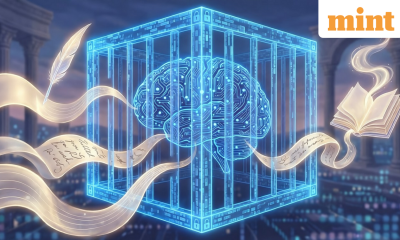
 Technology1 week ago
Technology1 week agoChatGPT and Gemini can be tricked into giving harmful answers through poetry, new study finds – Crypto News
-
others1 week ago
Grayscale Cleared to Launch First Spot Chainlink ETF This Week Amid Rising Demand – Crypto News
-
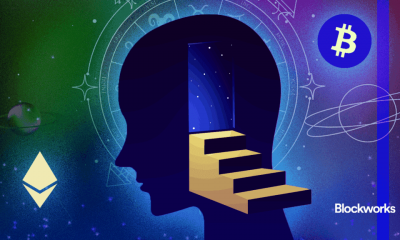
 Cryptocurrency1 week ago
Cryptocurrency1 week agoAstrology for traders – Blockworks – Crypto News
-
Technology1 week ago
Sony Bank Joins Ripple, Circle to Launch USD-Pegged Stablecoin in the U.S. by 2026 – Crypto News
-
Business1 week ago
Schiff Predicts ‘Beginning of the End’ for MSTR as Strategy Eases Bitcoin Sell-Off Fears With $1.44B Reserve – Crypto News
-
Cryptocurrency1 week ago
Operation Choke Point: House Republicans Spotlight Biden Administration’s ‘Attack on Crypto’ – Crypto News
-

 others7 days ago
others7 days agoWTI declines below $59.50 as bearish outlook prevails – Crypto News
-
Technology6 days ago
Breaking: First U.S. Chainlink ETF Goes Live as Grayscale Launches ‘GLNK’ – Crypto News














